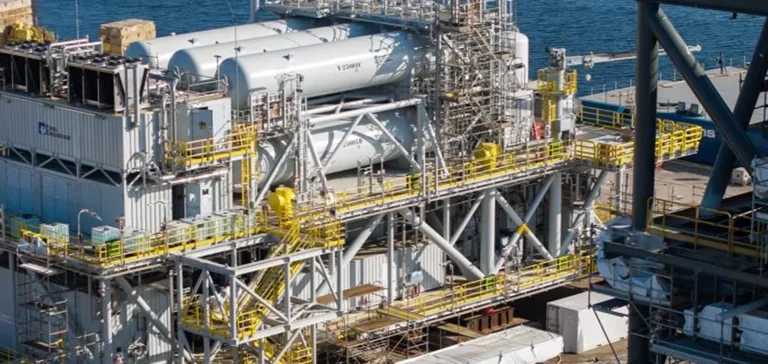Elogen, a subsidiary of the GTT group, has delivered a 2.5 MW proton exchange membrane (PEM) electrolyser for the Baseload Power Hub (BLPH) developed by CrossWind, a joint venture between Shell and Eneco. This project aims to combine wind power with green hydrogen production, providing a new flexibility solution for the Dutch electricity grid.
Wind energy storage and intermittency management
The delivery of this equipment is part of a strategy for managing the intermittency of renewable energies. Initially planned for offshore installation, the BLPH will ultimately be deployed onshore at Eemshaven in the Netherlands. Its goal is to store surplus energy generated by the Hollandse Kust Noord (HKN) offshore wind farm in the form of green hydrogen, then convert it back to electricity when demand increases on the grid. This process supports system stability and aims to limit carbon dioxide emissions.
Accelerated industrial schedule and technological integration
The project was completed within a total period of 30 months. The initial engineering phase, dedicated to design and technical documentation, lasted six months. This was followed by a 24-month EPCC phase, covering engineering, procurement, construction, and commissioning of the system. Elogen was responsible for providing the electrolyser stacks and main PEM system equipment, while integration and assembly were handled by FORES Engineering with the support of several technical partners.
Testing and operational launch of the platform
The final commissioning phase was supervised by Elogen over 17 weeks, up until the planned departure of the platform in early August. Following successful on-site integration tests, the platform will be operated by Delft Offshore Turbine B.V. (DOT) and become a collaborative hub involving institutions such as TNO, Groningen Seaports, and several Dutch universities.
Eric Minaux, Chief Executive Officer of Elogen, stated: “We are proud to contribute to a project that directly addresses the challenges of renewable energy intermittency. This PEM electrolyser combines an unprecedented level of marinisation, full integration within an energy hub, and the capacity to operate sustainably at sea. Achieving this in just 30 months demonstrates our teams’ agility and the robustness of our technology for dynamic energy systems.”
Maria Kalogera, Head of Innovation at CrossWind, said: “The electrolyser is the backbone of the Baseload Power Hub. The completion of onshore integration tests marks a key milestone in demonstrating the role green hydrogen can play in making our energy system more flexible and resilient. Collaboration with Elogen has been crucial in reaching this milestone and accelerating the energy transition.”






















